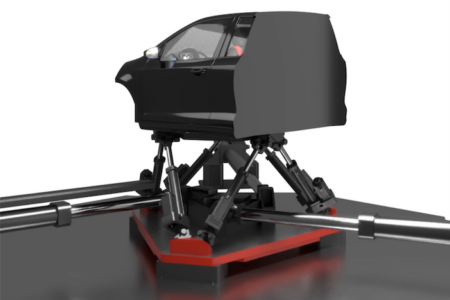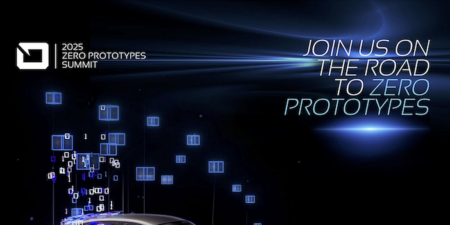At Automotive Testing Expo Europe in Stuttgart this week, Cruden demonstrated how driver-in-the-loop (DIL) simulators can improve the validity of ADAS simulations by giving visitors ‘test drives’ of a 6-DOF motion-based simulator, complete with a three-channel projection system and a 6m diameter screen. Cruden’s open architecture simulator software, Panthera, simulated a typical selection of ADAS scenarios including lane keeping and active cruise control.
Desktop simulation is widely used by engineers to make millions of virtual test kilometres for data processing and sensor fusion, and to check controller performance and robustness. A human driver is still required for the final stages in developing ADAS controllers. Once the ADAS controller has situational awareness of the simulated environment and has sufficient data to take decisions, the method and level of severity of the interaction with the driver needs to be evaluated, using driver-in-the-loop simulation. Using a driving simulator in the development of ADAS algorithms also provides a good opportunity to evaluate various algorithms and strategies with a human in the loop before signing-off with a physical prototype on test tracks and public roads.
Maarten van Donselaar, CEO of Cruden explained at the Expo, “To evaluate closed-loop performance, it is desirable to use relatively simple built-in ideal sensor models to achieve well-defined input and create situational awareness for the ADAS controller. This way, the focus of the DIL simulator experiments lies with controller development and analysis of the human-machine interaction. Sensor failure and/or erroneous controller behavior can be manually injected by the operator to simulate the effect of real-world disturbances and imperfections; however interfaces to advanced ADAS development packages like Vires-VTD and TASS-PreScan do also exist.”
Van Donselaar added that ADAS engineers also need reliable subjective feedback to understand how the driver copes with the fact that a controller is interfering with their vehicle, which cannot be accurately achieved with desktop simulation. Thus his company has developed simulators that offer dedicated automotive motion-cueing, high-fidelity vehicle dynamics models, realistic graphics and cockpit mock-ups. “This ensures that the driver is fully immersed in a believable environment, which leads to useful subjective-objective correlation for our ADAS customers,” he stated.




